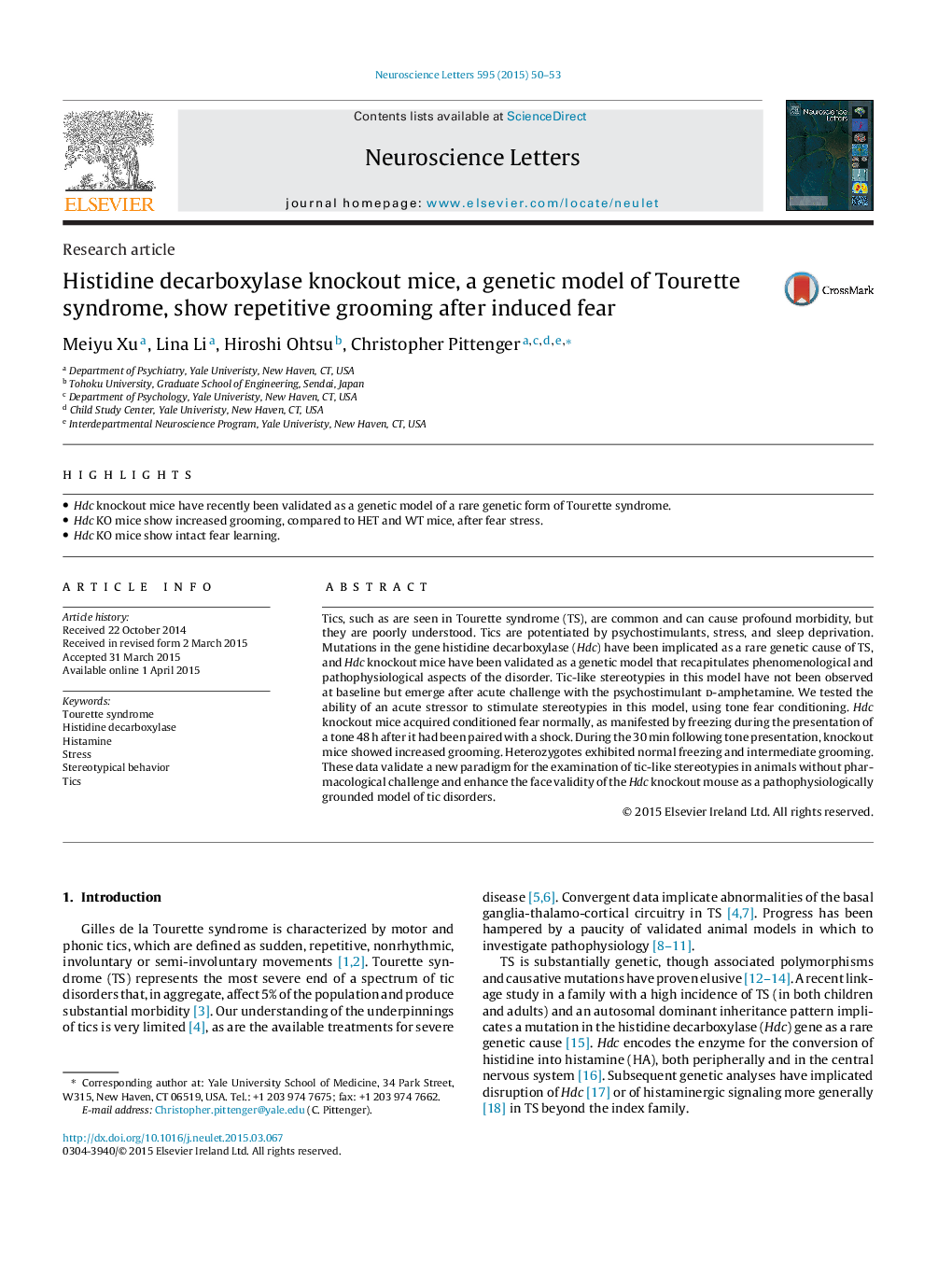| Article ID | Journal | Published Year | Pages | File Type |
|---|---|---|---|---|
| 6280948 | Neuroscience Letters | 2015 | 4 Pages |
Abstract
Tics, such as are seen in Tourette syndrome (TS), are common and can cause profound morbidity, but they are poorly understood. Tics are potentiated by psychostimulants, stress, and sleep deprivation. Mutations in the gene histidine decarboxylase (Hdc) have been implicated as a rare genetic cause of TS, and Hdc knockout mice have been validated as a genetic model that recapitulates phenomenological and pathophysiological aspects of the disorder. Tic-like stereotypies in this model have not been observed at baseline but emerge after acute challenge with the psychostimulant d-amphetamine. We tested the ability of an acute stressor to stimulate stereotypies in this model, using tone fear conditioning. Hdc knockout mice acquired conditioned fear normally, as manifested by freezing during the presentation of a tone 48Â h after it had been paired with a shock. During the 30Â min following tone presentation, knockout mice showed increased grooming. Heterozygotes exhibited normal freezing and intermediate grooming. These data validate a new paradigm for the examination of tic-like stereotypies in animals without pharmacological challenge and enhance the face validity of the Hdc knockout mouse as a pathophysiologically grounded model of tic disorders.
Related Topics
Life Sciences
Neuroscience
Neuroscience (General)
Authors
Meiyu Xu, Lina Li, Hiroshi Ohtsu, Christopher Pittenger,
